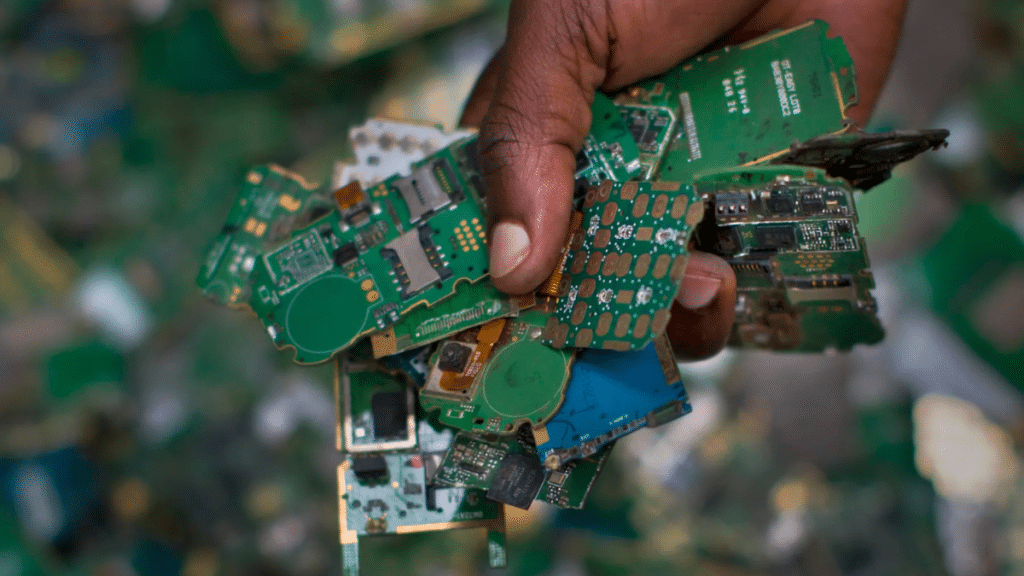Electronic devices power every corner of modern life, yet their growing popularity has a hidden cost: mountains of discarded phones, laptops, printers, and servers that now form the world’s fastest-growing solid-waste stream. In 2022 alone, humanity generated a record 62 million tons of e-waste—an 82 percent jump since 2010—and the trend shows no sign of slowing. Analysts project global volumes will surge to 82 million tons by 2030 if current habits continue. For businesses, governments, and communities alike, prioritizing responsible electronics recycling is no longer optional; it’s an environmental, economic, and social imperative.
The Scale of the Challenge
Rapid innovation, shorter product life cycles, and limited repair options mean devices are being replaced faster than they can be responsibly handled. Each year adds roughly 2.6 million tons of new e-waste to the pile. Yet only about 22 percent of what we discard ever reaches formal recycling channels. The rest often ends up in landfills, exported to informal dismantling sites, or stockpiled in closets and warehouses, where it quietly loses value and poses long-term risks.
Environmental Stakes: Conserving Resources and Cutting Emissions
Electronics may appear disposable, but inside every circuit board and battery lie essential, finite resources:
- Precious and critical metals. Copper, gold, palladium, lithium, cobalt, and rare earth elements can be extracted and reused with dramatically lower energy footprints than mining virgin ore. The metals in 2022’s wasted devices were worth an estimated $91 billion.
- Plastics and glass. Recovering polymers and glass cullet for re-manufacturing reduces demand for fossil-fuel-derived virgin plastics and lowers greenhouse-gas emissions tied to raw-material production.
Recycling electronics preserves these materials for future manufacturing cycles and slashes the climate burden linked to resource extraction. One recent life-cycle assessment found that reusing metals from e-waste can generate up to a 95 percent reduction in CO₂ emissions compared with primary mining and refining.
Protecting Human Health and Communities
Left unmanaged, e-waste leaches toxic substances including lead, mercury, cadmium, and brominated flame retardants. In informal recycling hubs, uncontrolled burning and acid baths expose workers and nearby residents to hazardous fumes and groundwater contamination, triggering respiratory illnesses, developmental issues in children, and persistent soil pollution. By channeling devices into licensed, environmentally sound recycling facilities, organizations remove dangerous materials from the biosphere and safeguard vulnerable communities.
Data Security: The Hidden Risk in Retired Devices
Old hard drives, SSDs, routers, and even smart-office equipment can hold gigabytes of sensitive corporate and personal data long after they’ve left the server rack. A single un-wiped drive ending up on the secondary market is enough to spark costly data-breach penalties and reputational damage. Choosing established recyclers that offer documented data-destruction services—whether through secure shredding, de-gaussing, or verified overwriting—closes the security loop and lets businesses comply confidently with privacy regulations.
Building a Circular Economy and Brand Trust
Consumers, investors, and regulators increasingly judge organizations by how well they manage their environmental footprint. Publishing sustainability reports, meeting ESG benchmarks, and embracing circular practices all hinge on transparent end-of-life strategies for tech assets. Companies that integrate electronics recycling into procurement and decommissioning policies reap multiple benefits:
- Reduced procurement costs through spare-part harvesting and buy-back programs
- Enhanced stakeholder confidence thanks to measurable waste-diversion metrics
- Stronger supplier relationships built on shared sustainability goals
Forward-thinking brands treat recycling as part of product stewardship, designing devices that are easier to disassemble, refurbish, and upgrade—a virtuous cycle that shrinks waste and boosts customer loyalty.
Practical Steps Toward Responsible E-Waste Management
While government policy and producer-responsibility schemes continue evolving, any organization can take immediate action:
- Inventory and audit aging electronics to quantify the scope of upcoming disposals.
- Choose reputable recycling partners who possess state licenses and show a clean history of being used by governments and national brands.
- Leverage manufacturer take-back programs for equipment still within extended service agreements.
- Host community collection events to engage employees and residents while diverting household gadgets from landfills.
- Embed circular thinking into procurement, preferring modular, repairable devices that support future upgrades.
The Bottom Line
Electronic waste is not just a line item in a sustainability report—it is one of the defining environmental challenges of our decade. Treating obsolete devices as valuable resources rather than disposable clutter delivers triple benefits: conserving raw materials, protecting public health, and strengthening corporate reputations. By committing today to responsible recycling, we keep critical metals in the production loop, cut carbon emissions, and move closer to a truly circular economy where technology powers progress without sacrificing the planet that makes it possible.
